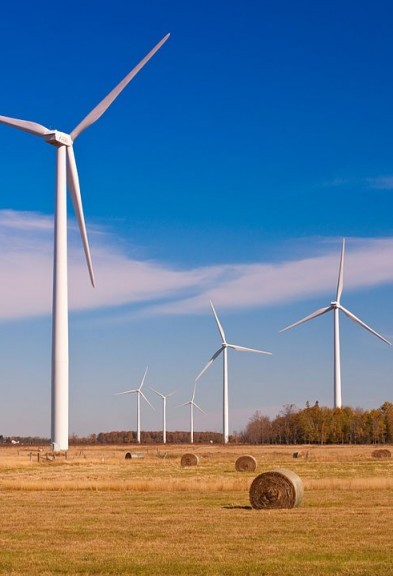
Today’s technology, new policies capable of combating climate change, report says
by Cleantech Canada Staff

Panel points to greener electricity as the key to low-emission shift

Ontario’s wind projects are one example of technology and government policy initiatives boosting the green electricity market. PHOTO: Ernesto Andrade, via Wikimedia Commons
“The technologies needed to mitigate the effects of climate change already exist, are well-researched, and are constantly improving,” Keith Hipel, the panel’s co-chair, said. “Experience from around the world shows us which policies work best and under what circumstances.”
“In short, we know everything we need to know to move Canada toward a low-emission energy future. We simply need to start,” he added.
With the goal of assessing the technology and policy options for transitioning Canada to a low-emission energy system, the Council of Canadian Academies report was prepared for auto parts manufacturer, Magna International Inc.
Along with the report’s key finding that the technologies required for a low-emission energy system already exist, the panel identified low-emission electricity as the foundation of a greener energy system. With increasing investment in wind and solar energy projects, many Canadian jurisdictions are already focusing on this key area, but a more aggressive adoption schedule would speed up the transition. The report also found the shift to a low-emission system is achievable through “the right combination of stringent and flexible policies.”
Still, the expert panel acknowledged the transition will not come without a cost.
“Canada, like most countries, relies on fossil fuels to meet most of its energy needs,” the report says. “As a result, many of the ways Canadians use energy on a daily basis, including driving cars, heating homes and buildings, and cooking meals, are implicated in greenhouse gas emissions.”
“Departing from a course of continued dependence on a high-emission energy system will involve changes to many aspects of how energy is produced, distributed, and used.”
Nevertheless, the report asserted changes can be achieved without jeopardizing Canada’s long-term economic growth and competitiveness.
“While energy system transitions tend to unfold over many decades, they can be accelerated with strategic policy support and are already underway in many jurisdictions across Canada,” the panel said.
The panel said in addition to shifting to low-emission energy sources, capturing and storing carbon from continued fossil fuel use may also be required to cut emissions further.
“Given the variability across Canada there is no one-size-fits-all solution for widespread reductions,” panel co-chair, Paul Portney, said. “However the panel’s report provides a series of options for private sector decision-makers, and different levels of government, as they seek to better understand energy use and the options available to combat climate change.”